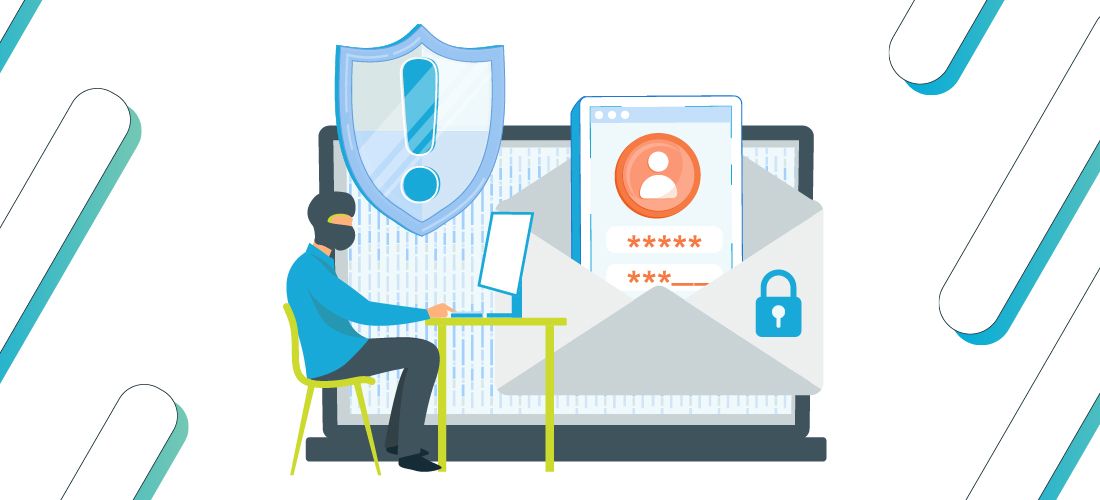
Malicious actors usually come prepared: before attacking an organization, they’ll gather as much data as possible to boost their chances of success.
One common tactic is user enumeration, where attackers seek to identify active user accounts. But what exactly is a user enumeration attack, and how do attackers execute it?
Let’s explore why user enumeration is so commonly used by malicious actors, share practical examples and offer tips to achieve robust defense.
What is a user enumeration attack?
A user enumeration attack is less of a direct cyberattack and more a reconnaissance mission that precedes one. It is a technique that malicious actors use to discover valid usernames or user accounts within a system or application.
User enumeration provides crucial information for subsequent attacks such as targeted phishing, password cracking or privilege escalation – all of which cannot take place if the attacker does not know which users exist in a system.
By doing reconnaissance via user enumeration, hackers methodically identify which users live in a company’s system – gaining a list of users to target.
Usernames become the target list
Usernames provide attackers with a list of potential targets. Armed with this list, malicious actors then test or probe these accounts and once verified, employ tactics to compromise verified accounts.
But successfully breaking into an account is just the first step. A compromised account can be used for unauthorized access to sensitive data or even control over an entire system. Yet it starts with user enumeration: finding out which users are in the system in the first place.
The danger lies in the fact that user enumeration is often subtle and difficult to detect, making it a potent weapon in a hacker’s arsenal.
Types of user enumeration attacks
User enumeration attacks come in many shapes and forms. Each attack vector exploits unique vulnerabilities and weaknesses within apps and systems. We can broadly categorize these attacks into three main types:
1. Passive enumeration attacks
In passive enumeration attacks, attackers gather information without directly interacting with the target system. The attacker relies on publicly available data or information leaked inadvertently. This includes looking at public websites or social media. For example, usernames or email addresses often appear in company personnel directories, forums or social media posts.
Analyzing website source code or metadata is another route to user enumeration, as developers sometimes include usernames within website code or file metadata. Misconfigured services can also be revealing. For example, where a system administrator leaves a directory service open or misconfigures a network share.
2. Active enumeration attacks
Active enumeration attacks rely on a much more direct interaction with the target system: attackers probe the system using automated tools to try and elicit responses which confirm the existence of users or reveal valid usernames.
For example, attackers can systematically try different username and password combinations until they find a valid one. Likewise, subtle differences in error messages for invalid usernames versus invalid passwords can reveal valid accounts.
While active attacks are easier to detect they can nonetheless be surprisingly effective if an organization lacks robust security measures.
3. Application-specific enumeration attacks
Applications and services have unique vulnerabilities, and some have known user enumeration vulnerabilities. For example, weak password reset processes can allow attackers to enumerate usernames by checking if an email address is associated with an account.
Some applications inadvertently expose APIs that reveal usernames based on certain inputs, while publicly accessible user profile pages can inadvertently display lists of usernames or provide clues about valid accounts.
Application-specific attacks highlight the importance of securing every aspect of an application – not just the obvious entry points.
Practical examples of user enumeration attacks
How does this play out in practice? Here are three common examples of user enumeration attacks.
Practical examples of user enumeration attacks
How does this play out in practice? Here are three common examples of user enumeration attacks.
1. Login pages
This is one of the most common forms of user enumeration. The attacker will input various usernames into a login form, and then carefully watch the server’s response. If the server responds with a message like “username not found,” the attacker knows that the username does not exist in the system.
Conversely, if the server responds with “password incorrect,” the attacker can infer that the username is valid, allowing them to focus on cracking the password for that username, or attacking the user via a phishing attack or another route.
2. Password reset
Attackers exploit the password reset feature by entering different usernames or email addresses. If the system indicates that a reset link has been sent to the email address, the attacker knows that the username or email is valid.
It’s another quick way to build a list of valid usernames for future use. Similarly, a poorly designed system might explicitly state that the username does not exist, thereby confirming to the attacker which usernames are invalid.
3. Registration pages
Another common route for user enumeration is via faking registrations. If, during the registration process, a user tries to register with a username that already exists, the system might tell that a username is taken.
Attackers can exploit this by attempting to register with various usernames and noting which ones are already in use, thereby compiling a list of valid usernames.
Defense mechanisms
What can organizations do to guard against user enumeration, and how can companies prevent users from becoming targets? It requires a multi-layered approach – both in terms of preventing attackers from accessing user data and exploiting any data they already have.
Network security is the first port of call. Firewalls and intrusion detection systems should flag suspicious activity, such as repeated login attempts or unusual error message patterns. Restricting the number of login attempts or requests from a single IP address within a given time frame is another defensive option.
In application security, consider input validation and sanitization alongside use of a CAPTCHA to make sure malicious inputs won’t trigger error messages or reveal sensitive information. Broadly speaking, avoid revealing detailed error messages that attackers could exploit.
Regular security audits and penetration testing also help address vulnerabilities before attackers can exploit them. Some organizations will also go as far as to set up decoy accounts or systems to lure attackers and gather information about their tactics.
User education and awareness is the final component of comprehensive protection against user enumeration. Teach users how to identify and avoid phishing emails and other social engineering tactics, and encourage users to create strong, unique passwords and avoid reusing them across multiple accounts.
Defense mechanisms combined with a culture of security awareness help organizations significantly reduce the risk of successful user enumeration attacks and protect their valuable user data.
How a strong identity platform helps
A robust identity platform acts as a powerful shield against attacks driven by user enumeration. Identity platforms work by centralizing and streamlining identity management, access control and authentication processes. Here’s how:
- Centralized user management: A unified identity platform provides a single source of truth for user identities, making it easier to manage accounts, enforce consistent policies and detect suspicious activity such as a user enumeration attack.
- Adaptive authentication: This technology assesses risk factors in real time, adjusting authentication requirements accordingly. This means that suspicious login attempts or unusual activity can trigger additional verification steps, making it harder for attackers to gain unauthorized access.
- Risk-based access control: This evaluates various risk factors, such as user location, device type, and behavior patterns, to grant, deny or even block access attempts altogether. This helps prevent unauthorized access even if an attacker manages to enumerate users and obtain valid credentials.
- Single Sign-On (SSO): SSO reduces the number of passwords users need to remember, minimizing the risk of weak or reused passwords that attackers could exploit. It more broadly also reduces the attack surface – by consequence reducing the risk of user enumeration.
A strong identity platform therefore reduces the scope for a user enumeration attack but also acts as a vigilant guardian: constantly monitoring user activity and enforcing security policies, making it significantly more challenging for attackers to rely on the data collected during a user enumeration attack.
An “innocent” first step that demands immediate action – and prevention
User enumeration might appear harmless as it’s not immediately obvious how an attacker will exploit a list of usernames. However, this is often right where the real danger begins. User enumeration provides attackers with all the knowledge they need to launch broader attacks against your users – which can escalate into a crippling ransomware attack or worse.
Defending against user enumeration starts with making it more difficult for attackers to successfully scan for valid user accounts. However, comprehensive protection ultimately requires implementing robust cybersecurity measures and educating users to prevent attackers from exploiting this data.
Your identity platform plays a crucial role in this defense – both in guarding against user enumeration and protecting individual user accounts from subsequent attacks.


